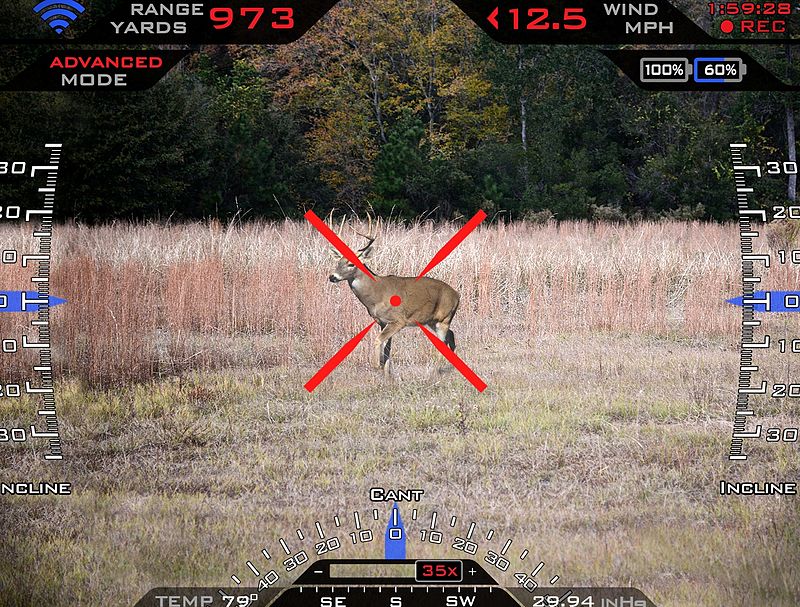

Imagine seeing this without looking through a viewfinder.
Precision Guided Firearms (PGFs) are rifles that are inspired by the same missile lock-on technology commonly found in fighter jets. Built with a multitude of sensors that accurately measure wind, elevation, and pressure in real time, PGFs are able to successfully hit their mark from up to 1,200 yards away. With such precise accuracy and range, PGFs are becoming increasingly popular for hunting, wildlife management, predator control, and sport shooting.
One of the advantages fighter jets have over PGFs is their Heads-Up Display (HUD). While PGFs do have a built-in display in their viewfinder, shooters are still required to keep their eye on their target. With a true HUD system, shooters can read target data without ever turning their head from their usual viewpoint. Instead of trying to aim, the shooter can concentrate on the ballistic calculations and accurately hit their mark.
TrackingPoint, the applied technology company that invented the first PGF back in 2011, is currently in the research-and-development phase of pairing Google Glass with their ShotView HUD application. Previously, the ShotView system could only stream data to a mobile device, but with Google Glass strapped on a shooter’s head, he or she can now look wherever he or she wants – even away from the target.
In a video released by TrackingPoint earlier today, we are shown exactly how wearable technology can enhance the use of weapons on a battlefield. The shooter demonstrates how Google Glass lets him shoot around corners, behind walls, and from trenches that provide excellent protection from enemies. Although this is also possible with different technology, Google Glass makes it easier.
“The Army is considering buying additional TrackingPoint weapon Systems pending on funding. This purchase would allow the Army to evaluate, test and analyze the commercially available, non-developmental item to assess the capabilities this system could bring to the soldiers and to assist Army requirement developers to define future fire control requirements.”
– Alton Stewart, United States Army Program Executive Office Spokesman
Are you anxious to see what a new breed of super soldiers can do with Google Glass and other wearable technology?
